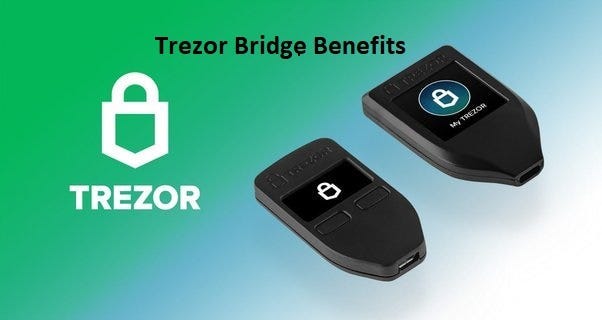The Definitive Guide to Trezor Bridge

What is Trezor Bridge? The Essential Link
In the world of cryptocurrency security, a hardware wallet is the gold standard for protecting your private keys. However, for a hardware device like a Trezor to interact with web-based applications and wallets (like Trezor Suite for Web), it needs a way to communicate securely with your browser. This is precisely the problem that Trezor Bridge was designed to solve.
At its core, Trezor Bridge is a piece of software that runs in the background on your computer (as a daemon or service). It acts as a secure intermediary, creating a communication channel between your Trezor hardware wallet, which is connected via USB, and your web browser. Without this bridge, your browser would have no standardized way to detect or send commands to the Trezor device, rendering web-based wallet management impossible. It is the foundational component that enables the seamless and secure user experience that Trezor is known for.
How Does It Work? A Look Under the Hood
When you install Trezor Bridge, you are setting up a local application that constantly listens for communication requests on a specific port on your computer. When you navigate to a web service compatible with Trezor, like the official Trezor Suite, the website sends a request to this local port. The Bridge "catches" this request and translates it into a low-level USB command that your Trezor device can understand.
Conversely, when your Trezor device needs to send information back—such as a signed transaction or a public key—it communicates via USB to the Bridge. The Bridge then forwards this information securely back to the web application in your browser. This entire process is designed with security as the top priority. Your private keys never leave the Trezor device. The Bridge only facilitates the transfer of non-sensitive, encrypted, or public data.
The Evolution: Trezor Bridge vs. WebUSB
For many years, Trezor Bridge was the only way to establish this connection. However, technology has evolved. Modern web browsers like Google Chrome, Opera, and Brave now support a new standard called WebUSB. This API allows web pages to communicate directly with USB devices in a secure and permission-based manner.
With WebUSB, the need for a separate background application like Trezor Bridge is eliminated for users of compatible browsers. When you connect your Trezor, the browser can directly ask for permission to connect to the device. This simplifies the setup process and reduces the number of software components needed. However, Trezor Bridge remains critically important for a few key reasons:
- Browser Compatibility: Not all browsers support WebUSB (e.g., Firefox, Safari). For users of these browsers, Trezor Bridge is still essential.
- System Fallback: If there is a problem with the WebUSB connection for any reason, Trezor Suite will automatically fall back and try to use Trezor Bridge, ensuring maximum reliability.
- Legacy Support: It provides a consistent connection method for older systems or specific computer configurations where WebUSB might not function correctly.
Installation and Troubleshooting
Installing Trezor Bridge is straightforward. It is typically offered as an automatic download when you first set up your device via the Trezor Suite web interface. You simply download the installer for your operating system (Windows, macOS, or Linux) and run it. Once installed, it runs silently in the background, and you rarely need to interact with it directly.
Occasionally, users may encounter issues where their Trezor isn't detected. Common troubleshooting steps include:
- Ensuring the Trezor Bridge service is running in your system's task manager or activity monitor.
- Checking that no antivirus or firewall is blocking the application.
- Using a high-quality USB cable and connecting directly to the computer, not through a USB hub.
- Making sure no other applications (like another wallet software) are competing for the USB connection to the Trezor.
Conclusion: A Pillar of Trezor's Security Model
While the advent of WebUSB has provided a more direct communication method, the importance of Trezor Bridge cannot be overstated. It was a pioneering solution that solved a fundamental usability challenge for hardware wallets, making advanced security accessible to everyone. It continues to serve as a vital compatibility layer and a reliable fallback, ensuring that all users, regardless of their preferred browser or system, can securely manage their digital assets. It stands as a testament to Trezor's commitment to both robust security and a user-friendly experience in a complex ecosystem.